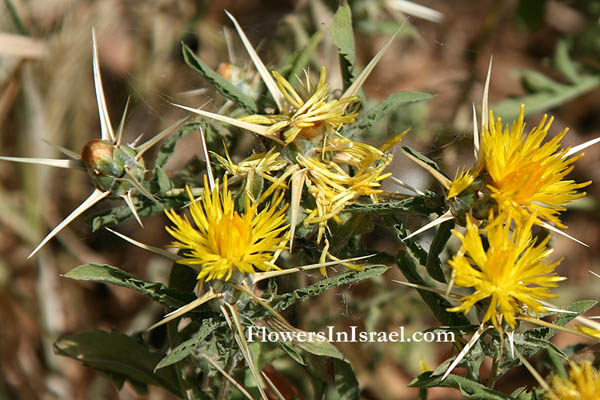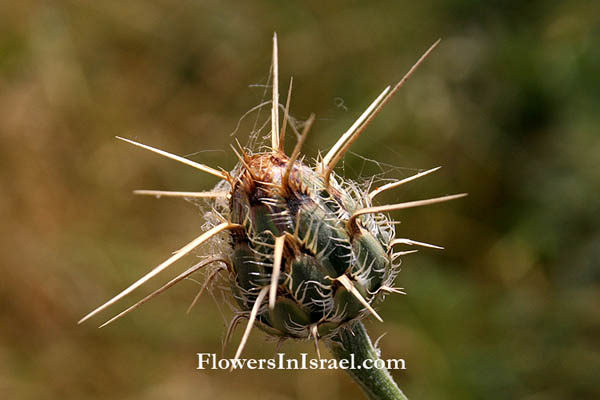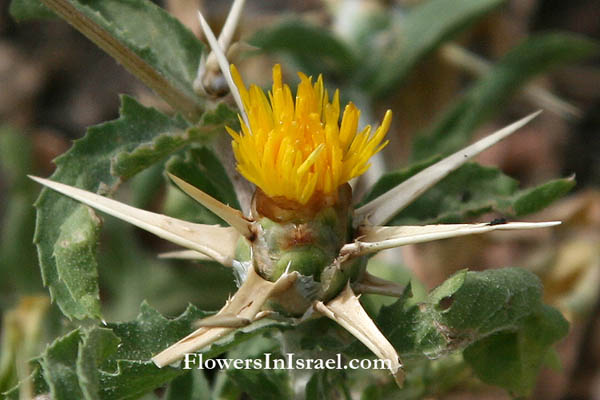Knapweed, Cornflower, Hebrew: דרדר קרומי, Arabic: مرار شفافي
| Scientific name: | Centaurea hyalolepisBoiss. | |
| Synonym name | Centaurea pallescens | |
| Common name | Knapweed, Cornflower | |
| Hebrew name: | דרדר קרומי | |
| Arabic name: | مرار شفافي | |
| Plant Family: | Compositae / Asteraceae, מורכבים |

|
| Life form: | Therophyte, annual | |
| Spinescence: | Bracts | |
| Stems: | 25-40 cm in height | |
| Leaves: | Alternate. rosette, dissected once, dentate or serrate, not spiny | |
| Flowers: | Pink, purple, yellow | |
| Fruits / pods: | Cypselae | |
| Flowering Period: | March, April, May, June | |
| Habitat: | Batha, Phrygana, Shrub-steppes | |
| Distribution: | Mediterranean Woodlands and Shrublands, Semi-steppe shrublands, Shrub-steppes, Deserts and extreme deserts | |
| Chorotype: | Med - Irano-Turanian | |
| Summer shedding: | Ephemeral |

Derivation of the botanical name: Centaurea, gets its name from the centaur, Chiron, who is said in mythology to have taught us the healing power of herbs. The Hebrew name: דרדר, dardar, from Aramaic: דרדרא, dardara; Arabic: דרדאר, darda'ar. (Gen. 3:18, Hos. 10:8). In modern Arabic shauket el-dardar is applied to the star thistles or knapweeds.

|